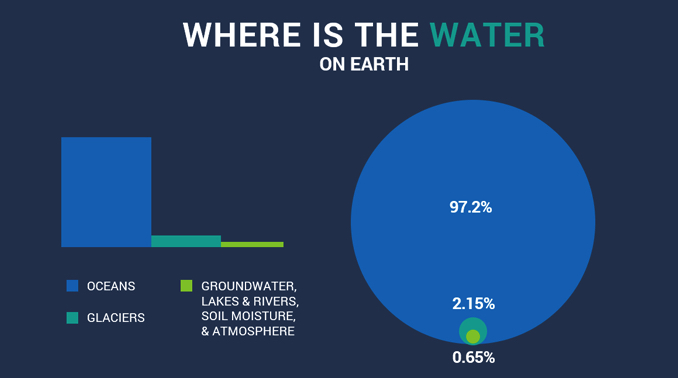
Nestled within a corner adjacent to northeastern India, spanning 57,300 square miles, lies one of the most densely populated countries in Southeast Asia, Bangladesh. The population of Bangladesh is spread out, with roughly 114 million people (76%) living in rural areas, and 36.4 million (24%) living in urban areas, with the largest concentration in the capitol, Dhaka.3 It is classified as a “riverine” country, with a vast amount of rivers and streams that flow from the higher elevations in the northern part of the country down through the rural and urban areas to the south. Four major river systems allow 230 rivers to interconnect throughout the land (Figure 2) which gives 97% of the Bangladesh population access to water. With 20 million residents, the mega-city of Dhaka relies on major rivers such as the Buriganga to sustain their existence. Unfortunately, these water systems are in peril from human-generated factors such as agriculture, industry, mining, power generation, unsanitary waste disposal practices, and other human factors. These factors affect the public health with high amounts of metal contaminants like arsenic, and bacteria such as E. Coli causing increased impacts to human health, and even death.4
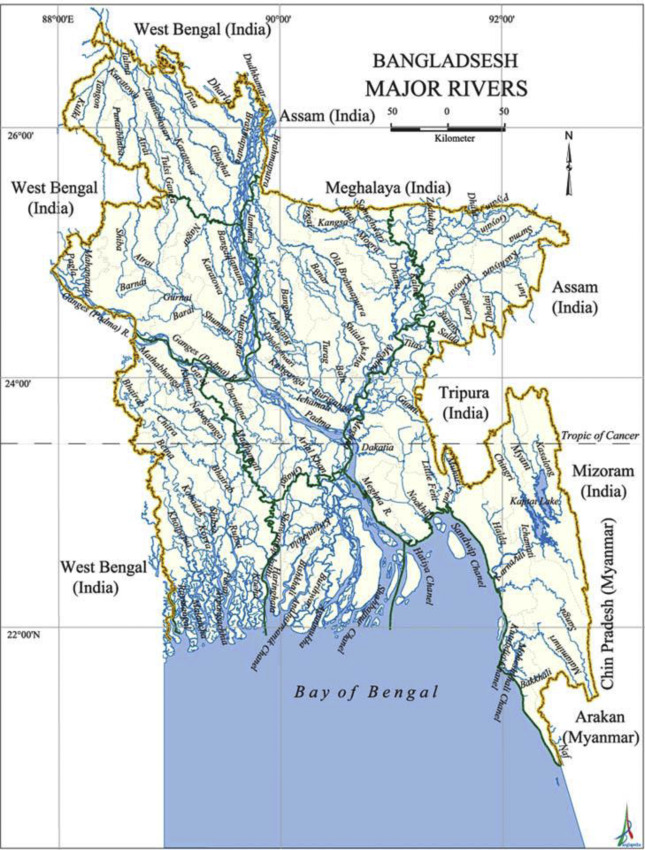
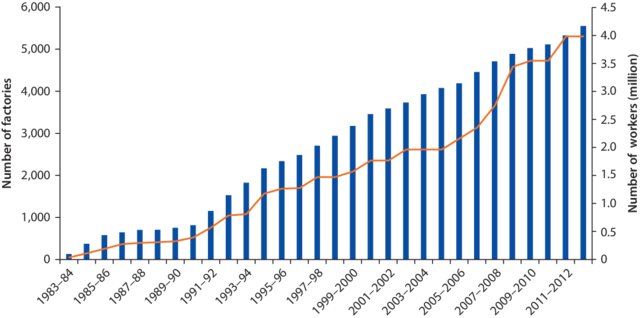
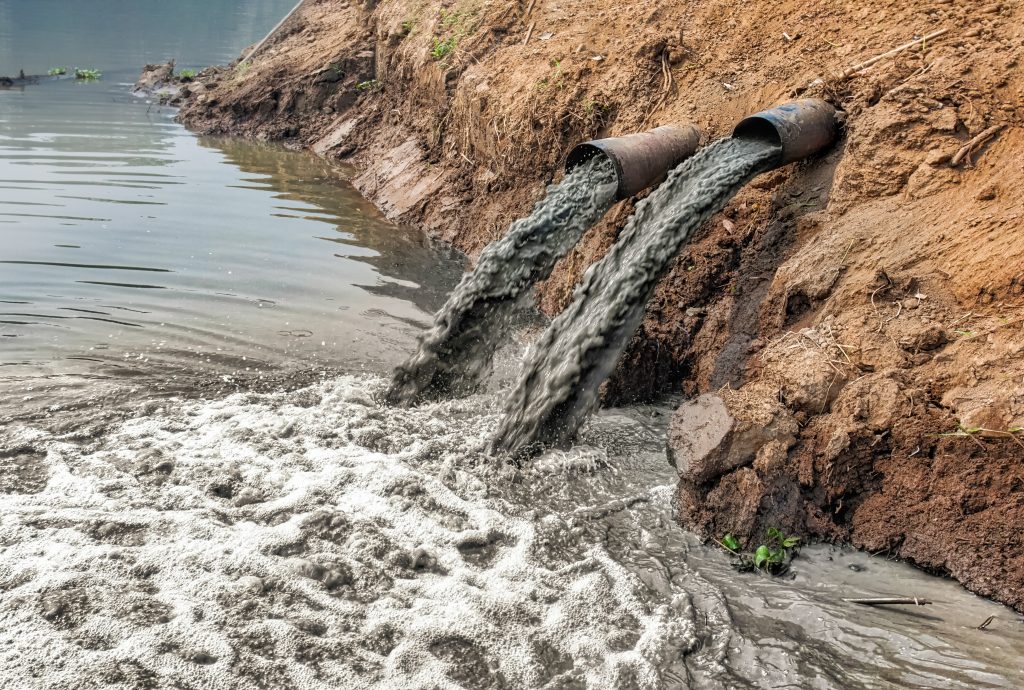
In relation to the RMG industries that contribute most of the pollution into the water systems, where does this lack of monitoring come from? Many of the lower tier organizations such as the non-government and civil societies highlight the opaqueness of accountability the government holds the private industrial sectors resulting in pressure put on organizations like the Department of Environment (DoE). The DoE is dedicated to monitoring, evaluating, and enforcement. Although the agency plays a pivotal role in managing the compliance with respect to ETPs, it is often pressured to report that high amount of effluents are being captured by the ETPs, instead of the ETPs not performing optimally and requiring the industry to shut down for repairs. The potential for a conflict of interest between the industrial sectors and government agencies further denotes the lack of cohesion amongst the water management organizations and results in inefficient implementations of strategies including highlighting areas that need to be reevaluated.15
However grim it might seem for the water quality in Bangladesh, many of the management agencies look forward to continuing progress that began in 2009 with the re-election of Prime Minister Sheikh Hasina (Figure 5). Standing on a platform devoted to restoring Bangladesh’s water quality while retaining its economic growth, she noted that “Conservation and protection of the environment is a time-honoured ‘responsibility’, not just a necessity.”16 In 2017 she gave a speech at the Dhaka Water Summit that highlighted some of the accomplishments she has overseen during her term in office. The rate of unsanitary human waste disposal in 2003 was 42%, but by 2017 the rate of unsanitary waste disposal was below 1%. She has taken an approach to restore surface water and reduce the amount of groundwater being used, resulting in 7,000 ponds being desalinated by sand filtering, with 4,700 reservoirs constructed to catch and preserve rain water. Plans to build reservoirs in industrial and housing areas are underway, with the installation of rainwater harvesting systems filtration systems for wastes and polluted water.17 Another breakthrough is the backing of the Bangladesh High Court that has ordered 231 out-of-compliance factories to shut down and repair systems to meet DoE clean water requirements18 The fact that the Bangladesh High Court has ordered factories to shut down until operations can meet DoE water quality regulations shows that collaboration is increasing among the agencies that hold power to promote change.
As progress continues and water quality increases, clean drinking water can be provided to the population of Bangladesh. This steady record of improvement showcases the importance of interagency collaboration, and how all individuals will need to adapt in order to maintain access to clean water. Although there is a long journey ahead to clean all the water in Bangladesh, the progress made today shows that collaboration is no longer missing, it is beginning.
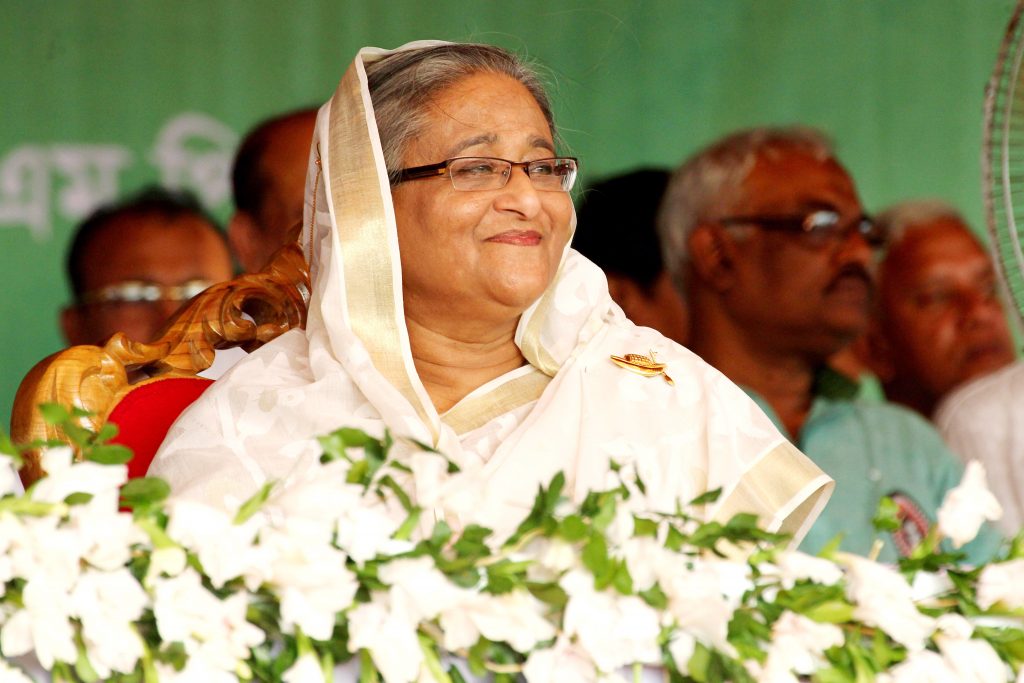
- “How Much Water Is on Earth? – Earth How.” n.d. Accessed November 4, 2021. https://earthhow.com/how-much-water-is-on-earth/. ↵
- “Water Facts – Worldwide Water Supply | ARWEC| CCAO | Area Offices | California-Great Basin | Bureau of Reclamation.” n.d. Accessed October 29, 2021. https://www.usbr.gov/mp/arwec/water-facts-ww-water-sup.html. ↵
- Hossain, Md Amir. 2017. “Bureaucratic System in Bangladesh.” Review of Public Administration and Management 05 (02). https://doi.org/10.4172/2315-7844.1000214. ↵
- Hasan, Md. Khalid, Abrar Shahriar, and Kudrat Ullah Jim. 2019. “Water Pollution in Bangladesh and Its Impact on Public Health.” Heliyon 5 (8): e02145. https://doi.org/10.1016/j.heliyon.2019.e02145. ↵
- “River – Banglapedia.” n.d. Accessed November 4, 2021. https://en.banglapedia.org/index.php/River. ↵
- “Bangladesh Case Study: Economic Development.” n.d. Economic Development, 53. ↵
- “Safety First: Bangladesh Garment Industry Rebounds.” n.d. Accessed October 29, 2021. https://www.ifc.org/wps/wcm/connect/NEWS_EXT_CONTENT/IFC_External_Corporate_Site/News+and+Events/News/Insights/Bangladesh-garment-industry. ↵
- Islam, Md. Saiful. 2021. “Ready-Made Garments Exports Earning and Its Contribution to Economic Growth in Bangladesh.” GeoJournal 86 (3): 1301–9. https://doi.org/10.1007/s10708-019-10131-0. ↵
- Kathuria, Sanjay, and Mariem Mezghenni Malouche. 2016. Toward New Sources of Competitiveness in Bangladesh: Key Insights of the Diagnostic Trade Integration Study. Washington, DC: World Bank. https://doi.org/10.1596/978-1-4648-0647-6. ↵
- Hossain, Laila, and Mohidus Samad Khan. 2020. “Water Footprint Management for Sustainable Growth in the Bangladesh Apparel Sector.” Water 12 (10): 2760. https://doi.org/10.3390/w12102760. ↵
- Restiani, Phillia. n.d. “WATER GOVERNANCE MAPPING REPORT: TEXTILE INDUSTRY WATER USE IN BANGLADESH,” 49. ↵
- Islam, Md., M. Uddin, Shafi Tareq, Mashura Shammi, Abdul Kamal, Tomohiro Sugano, Masaaki Kurasaki, Takeshi Saito, Shunitz Tanaka, and Hideki Kuramitz. 2015. “Alteration of Water Pollution Level with the Seasonal Changes in Mean Daily Discharge in Three Main Rivers around Dhaka City, Bangladesh.” Environments 2 (4): 280–94. https://doi.org/10.3390/environments2030280. ↵
- “Water Pollution River Because Industrial Not Stock Photo (Edit Now) 753258850.” n.d. Accessed November 4, 2021. https://www.shutterstock.com/image-photo/water-pollution-river-because-industrial-not-753258850. ↵
- Lindamood, Danielle, Derek Armitage, Dilruba Fatima Sharmin, Roy Brouwer, Susan J. Elliott, Jennifer A. Liu, and Mizan R. Khan. 2021. “Assessing the Capacity for Adaptation and Collaboration in the Context of Freshwater Pollution Management in Dhaka, Bangladesh.” Environmental Science & Policy 120 (June): 102. https://doi.org/10.1016/j.envsci.2021.02.015. ↵
- Lindamood, Danielle, Derek Armitage, Dilruba Fatima Sharmin, Roy Brouwer, Susan J. Elliott, Jennifer A. Liu, and Mizan R. Khan. 2021. “Assessing the Capacity for Adaptation and Collaboration in the Context of Freshwater Pollution Management in Dhaka, Bangladesh.” Environmental Science & Policy 120 (June): 104–5. https://doi.org/10.1016/j.envsci.2021.02.015. ↵
- “HE Sheikh Hasina | Champions of the Earth.” n.d. Accessed October 30, 2021. https://www.unep.org/championsofearth/laureates/2015/he-sheikh-hasina. ↵
- Hasina, Sheihk. 2017. “Bismillahir Rahmanir Rahim.” https://pmo.portal.gov.bd/sites/default/files/files/pmo.portal.gov.bd/pm_speech/f02109f4_3886_452d_9a57_ab1cdc5dc43b/dhaka_water_conf_290717_eng.pdf. ↵
- “Bangladesh Court Orders 231 Factories Closed to Save River.” n.d. Accessed October 30, 2021. https://apnews.com/article/669408ee151214f18b0fa74533d9674c. ↵
- “Portrait Prime Minister Sheikh Hasina Rally Stock Photo (Edit Now) 1707339541.” n.d. Accessed November 4, 2021. https://www.shutterstock.com/image-photo/portrait-prime-minister-sheikh-hasina-rally-1707339541. ↵
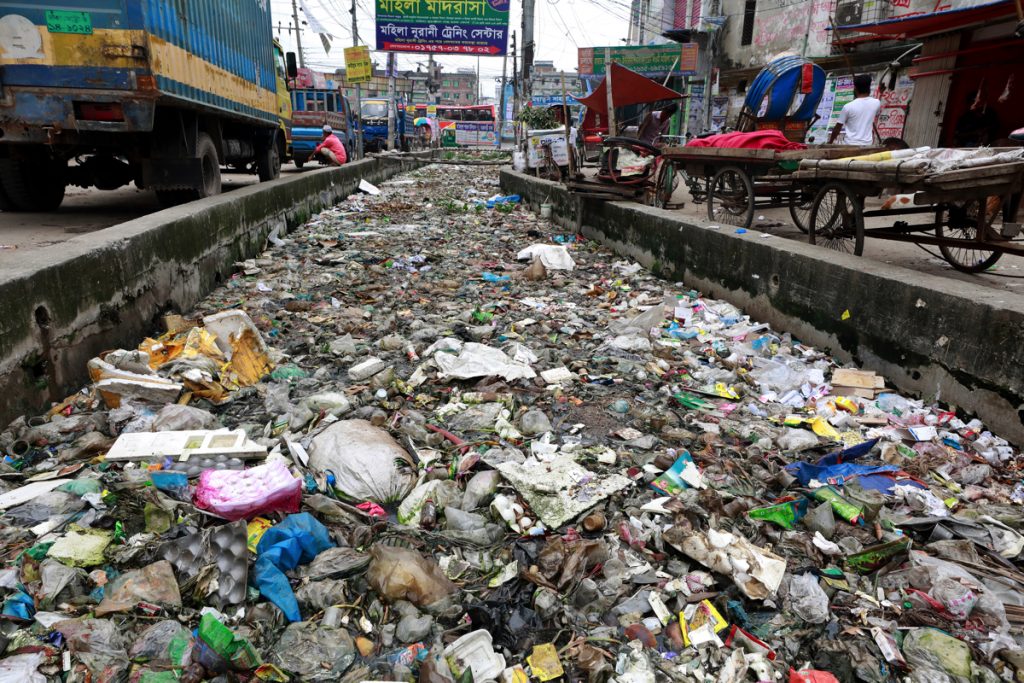



23 comments
LEE
I like this article. This article is talking about very important issue happening in Bangladesh. There are many trash on the street which makes pollution. And it is very harmful for our planet. I like the way how he chose the topic and explained about the situation. It is glad to read this and i think we need to do some act for this pollution.
Sebastian Hernandez-Soihit
Very important issue in Bangladesh with its impact on the people, more so when people tend to think of Bangladesh as a developed state without seeing its social problems
Juan Aguirre Ramirez
This informative article highlights the alarming ease with which individuals and organizations poison our water, and the devastating consequences this has on marine life and humans. The use of pictures helps to drive home the severity of the issue and the need for action. Although the problem may not directly affect everyone’s life, it is still crucial to be aware of it and take control to turn things around. The article also shows the efforts of the Bangladesh government and its people to address the issue. The visuals and graphs were very helpful in making the article engaging, impactful, and hopeful for future progress.
Amy Hotema
Salut, Stefan! Reading about the circumstances in Bangladesh was alarming. First of all, your essay has a really intriguing title that drew me in. The graphs and pictures properly complement the textual material. The information in the text is quite potent. Water issues were commonplace in my own country, so reading about them was comforting. However, it is encouraging to see how Bangladeshis are attempting to change the situation for the better. The majority of nations do not possess the same will to alter a climate catastrophe as Bangladesh did. Amazing article choice that was quite educational and raised my awareness.
Yanelle Nicholson
This was a very informative article, and I feel as though more people need to see this. The ease with which individuals and organizations poison our water is really alarming. Although this is a problem that, in all honesty, has no bearing on my life, it is nonetheless crucial since you never know when something similar can occur in America. The use of the pictures helps show people how bad this is, and why we need to take control in order to turn this around for the safety of us humans, and even marine life. Although this tragedy is occurring, I find it very satisfying to see that the people and the Bangladesh government are taking charge.
Seth Roen
It is rather sad that people and businesses pollute the very water that they need to survive. Some by accident, while others do it to cut costs in disposing of waste, and because of people in the government invented into companies, and preventing DoE from doing its job. It is causing the water to be unsuitable for human consumption. Hopefully, with the government now focusing on environmental clean-up, Bangladesh will return to clean drinking water.
Claire Saldana
The progress presented at the end is amazing. It says a lot that the government actually did something in their country to change their future. This article was very well written. The details and explanations helped me understand a topic a I have no previous knowledge of. I am doing a project on reducing plastic waste in America and I will be using this article to help further my research. I think the biggest obstacle I did not look into yet was the monitoring of the regulations in place.
Isaac Fellows
I agree with Christian! Your title is a great one, and really dragged me in to read. Many of the issues we are exposed to are personal, local, and based here in the United States. But this is an issue which truthfully has no impact on my life, and yet is still very important. It’s easy to neglect the problems of others in nations which aren’t nearly. as fortunate as ours, so I commend you for writing this article. I was so intrigued, I kind of want to look more into it.
Daniel Diaz
Water management is one of the most difficult things that a government has to deal with when it comes to societies. Even in first world countries, water is still an issue. Some places like Bangladesh have really good irrigation capabilities because of how the natural water flow flows through the region but the downfall comes at the fault that there are just too many people to try and hold accountable for the littering situation.
Vivian Urrutia
Hello Stefan! It was shocking to read how situations in Bangladesh are. First of all, you have a very catchy title which made me read your article. The images and graphs go perfectly with the text written. The text has very powerful information. Back in my country we also had many problems with the water so it was familiar to read about this topic. However, it is satisfying to see how people in Bangladesh are moving to really make a change in the issue. Most of the countries in the world don’t have the decision of wanting to change a climate crisis as Bangladesh had. Incredible choice of article, really informative and made me more consciences.